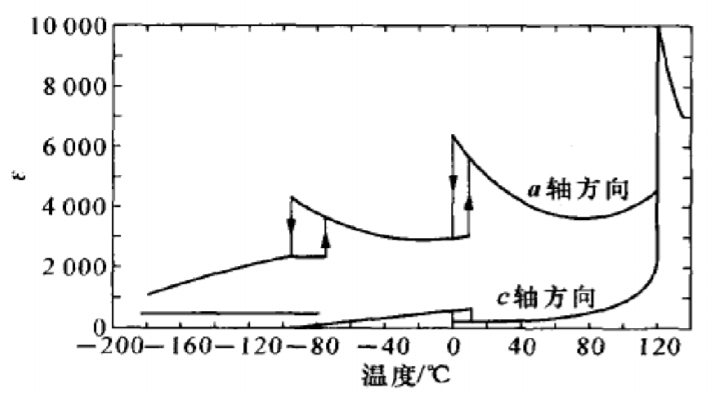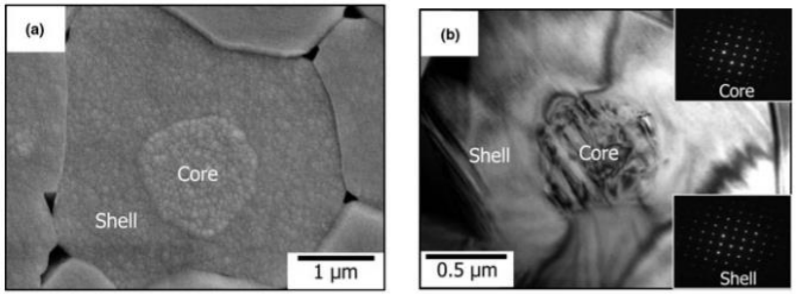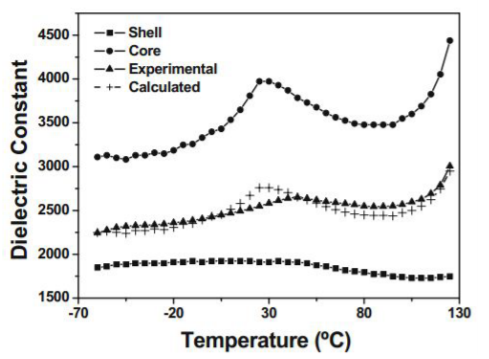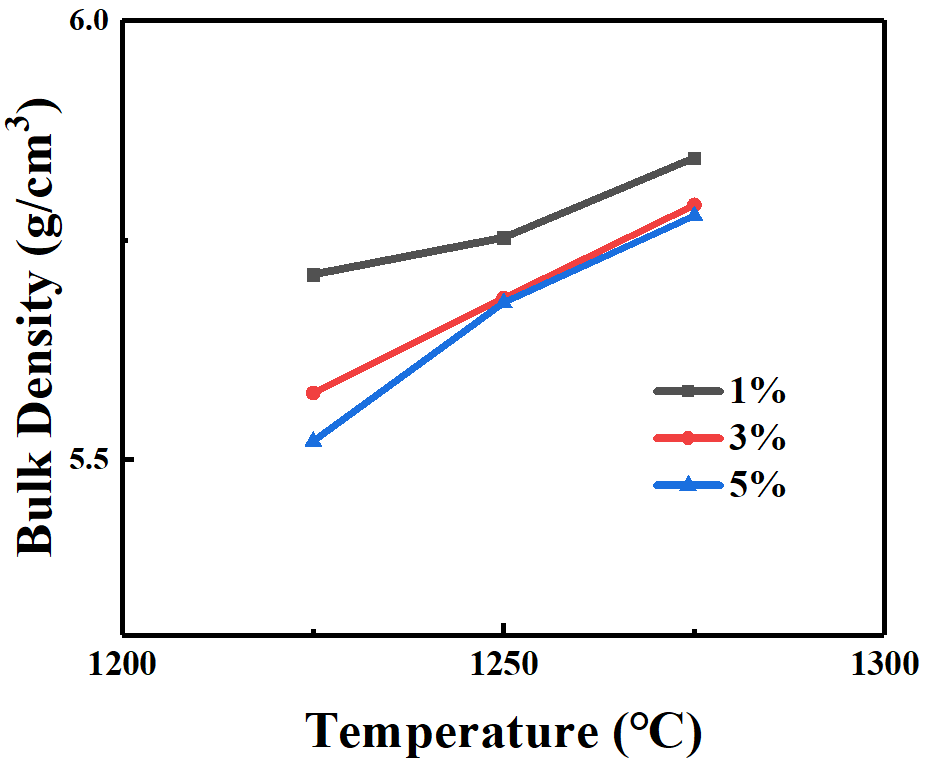还原气氛氧化物掺杂BaTiO3基陶瓷制备与介电性能毕业论文
2021-12-09 17:33:53
论文总字数:25838字
摘 要
多层陶瓷电容器(MLCC)具有较小的体积,同时具有较大的电容量。目前,为了降低成本,需要发展使用贱金属内电极(BME)如镍和铜来进一步缩减高性能MLCC的生产成本。内电极贱金属化后,为了防止在烧结过程中发生氧化,烧结需要在还原气氛下进行,然而在还原性气氛中Ti4 由于外部氧分压较低易被还原成Ti3 。所以制备BME-MLCC的关键是提高还原气氛下烧结钛酸钡基介质陶瓷的抗还原性。
据研究结果表明,温度稳定型BaTiO3基陶瓷材料中往往存在“核-壳”结构。具有“核-壳”结构的BaTiO3陶瓷,在其介温曲线上常会出现“双峰”结构,因此电容温度特性有明显的改善。
本文采用MgO和不同粒径的ZrO2对BaTiO3基介质陶瓷进行掺杂改性。通过固相法制备并在还原气氛下烧制,得到了具有“核-壳”结构的BaTiO3基陶瓷试样。研究结果表明,随着添加的ZrO2粒径的减小,BaTiO3的最佳烧结温度有降低的趋势。通过X射线衍射(XRD)测试分析结果表明,发现掺杂MgO和ZrO2制备的陶瓷均为理想的钙钛矿结构,呈立方相。随着MgO和ZrO2添加量的增加,其容温变化率满足∆C/C25℃≤±15%温度范围均有所提高。对于ZrO2而言,随着Zr4 掺杂量的增加,介电峰明显被逐渐压低展宽,但其粒径的改变对陶瓷样品介电性能并未产生显著影响。
关键词:钛酸钡;还原气氛;“核-壳”结构;介电性能
Abstract
Multilayer ceramic capacitors (MLCC) have a smaller volume and a larger capacitance. Currently, in order to reduce costs, it is necessary to develop the use of base metal internal electrodes (BME) such as nickel and copper to further reduce the production cost of high-performance MLCCs. In order to prevent oxidation during sintering in BME-MLCC, sintering needs to be performed in a reducing atmosphere. However, Ti4 is easily reduced to Ti3 in a reducing atmosphere due to the low external oxygen partial pressure. Therefore, the key to the preparation of BME-MLCC is to improve the reduction resistance of sintered barium titanate-based dielectric ceramics in a reducing atmosphere.
According to the research results, a "core-shell" structure often exists in temperature-stable BaTiO3-based ceramic materials. BaTiO3 ceramics with a "core-shell" structure often have a "double-peak" structure on their dielectric temperature curve, so the temperature characteristics of the capacitor are significantly improved.
In this paper, MgO and ZrO2 with different particle sizes were used to dope in BaTiO3-based dielectric ceramics. BaTiO3-based ceramics with a "core-shell" structure were prepared by solid-phase method and fired in a reducing atmosphere. The results show that as the particle size of ZrO2 decreases, the optimum sintering temperature of the sample tends to decrease. The analysis results by X-ray diffraction(XRD) test showed that the BaTiO3-based ceramics doped with MgO and ZrO2 are both ideal perovskite structures with a cubic phase. With the increase of the addition of MgO and ZrO2, the working temperature range is broaden, which meet the variation of capacitance requirement of ∆C/C25°C≤±15%. For ZrO2, with the increase of Zr4 content, the dielectric peak was gradually reduced and broadened, but the change of its particle size did not significantly affect the dielectric properties of ceramic samples.
Keywords: barium titanate; reducing atmosphere; “core-shell” structure; dielectric properties
目录
第一章 绪论 1
1.1 研究背景 1
1.2 BaTiO3基陶瓷的理论基础 2
1.2.1 BaTiO3的晶体结构 2
1.2.2 BaTiO3的介电性能 3
1.2.3 BaTiO3半导化机理 4
1.3 BaTiO3的“核-壳”结构(Core-Shell structure) 5
1.4 论文的选题意义 7
1.5 材料体系的选择 7
1.6 论文研究目的及内容 8
第二章 BaTiO3基陶瓷的制备方法及其结构与性能测试方法 9
2.1 制备BaTiO3基陶瓷的原料以及仪器设备 9
2.2固相法制备BaTiO3基陶瓷 9
2.3 测试方法与原理 11
2.3.1 体积密度 11
2.3.2 物相结构分析(XRD) 11
2.3.3 扫描电子显微分析(SEM) 12
2.3.4 介电性能测试 12
第三章 MgO掺杂改性BaTiO3基介电陶瓷 13
3.1 体积密度 13
3.2 物相结构 14
3.3 显微形貌 14
3.4 介电性能 15
3.5 本章小结 17
第四章 ZrO2掺杂改性介电陶瓷 19
4.1 实验路线 19
4.1 体积密度 19
4.2 物相结构 20
4.3 显微形貌 22
4.4 介电性能 23
4.5 本章小结 27
第五章 结论 28
参考文献 29
致 谢 32
第一章 绪论
1.1 研究背景
近年来,电子整机小型化、数字化发展趋势以及产品升级换代周期的缩短大大促进了多层陶瓷电容器(MLCC)的生产和开发,MLCC的技术发展表现为以下几种趋势:小型化、高电容量化、低成本化和集成化[1]。
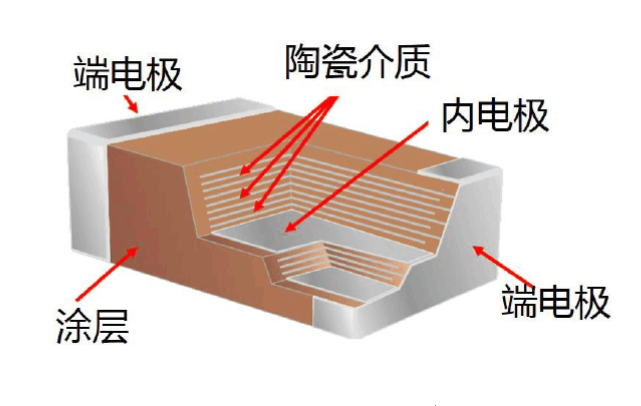
图1.1 多层陶瓷电容器的结构示意图
Fig 1.1 Structure of multilayer ceramic capacitors
MLCC结构如图1.1所示。为了使MLCC向小型化以及高电容化发展,叠合层数和电极涂覆面积相应地不断增加[2]。长期以来,MLCC中的内电极主要是纯Pd或Pd /Ag电极等资源有限的贵金属,为了降低成本,因而需要发展使用贱金属内电极(BME),如金属Ni等,来进一步缩减高性能MLCC的生产成本[3]。
在瓷料的选择方面,考虑到人体健康和对环境的保护,在不含铅的铁电陶瓷材料中,具有高介电常数、低温度变化率的以BaTiO3为基础的陶瓷介质材料因而成为首选。
内电极贱金属化后,为了防止在烧结过程中发生氧化而失去作为内电极的功能,故烧结需要在还原气氛下进行。然而对于钛酸钡基介质陶瓷来说,在还原性气氛中,Ti4 由于外部氧分压较低易被还原成Ti3 ,形成氧空位而发生半导化[4]。所以制备BME-MLCC的关键是提高还原气氛下烧结钛酸钡基介质陶瓷的抗还原性。
1.2 BaTiO3基陶瓷的理论基础
1.2.1 BaTiO3的晶体结构
BaTiO3具有ABO3钙钛矿型结构,配位数A:B:O=12:6:6,其晶体结构在理想情况下属于立方晶系,其中A通常为半径较大、低价的离子,而B则通常为半径较小、高价的离子。对于BaTiO3而言,Ba2 与O2-按面心立方堆积,Ti4 处于体心位置,如图1-2所示。Ti4 和O2-通过共顶方式连接形成[TiO6]八面体。
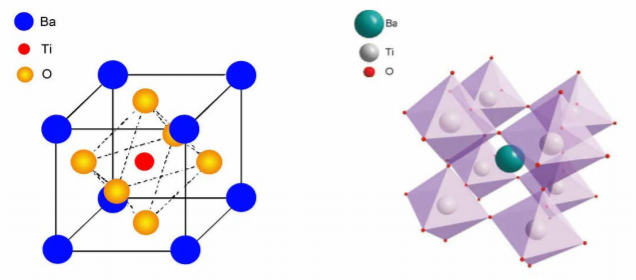
图 1.2 BaTiO3的晶体结构
Fig 1.2 Crystal structure of BaTiO3
BaTiO3晶体在温度变化时会引起晶体结构的变化。在1460 ℃以上,其具有稳定的六方相结构;BaTiO3的居里温度Tc大约是130 ℃,从此温度到1460 ℃,晶体结构保持较好的对称性,此时立方相稳定存在,因电荷对称分布,因此没有净的偶极矩,其行为如同正常的电介质,不具有铁电性;在居里温度(~130 ℃)附近,会发生顺电-铁电相变;当温度从130 ℃下降到5 ℃时,由于Ti4 热振动能量降低,其位移后形成的内电场的作用力就能够克服,以致向某一O2-靠近,电矩在晶胞中出现,从而产生向c轴方向的自发极化(即[001]方向),晶体结构由立方结构转成四方结构;在- 90 ℃~5 ℃之间,晶体结构为正交相,自发极化的方向是[011];当温度低于-90 ℃,此时结构稳定,为三方相,自发极化的方向沿着[111]体对角线。钛酸钡的三次结构相变和极化方向见图1-3和表1-2[5]。
请支付后下载全文,论文总字数:25838字
相关图片展示:
